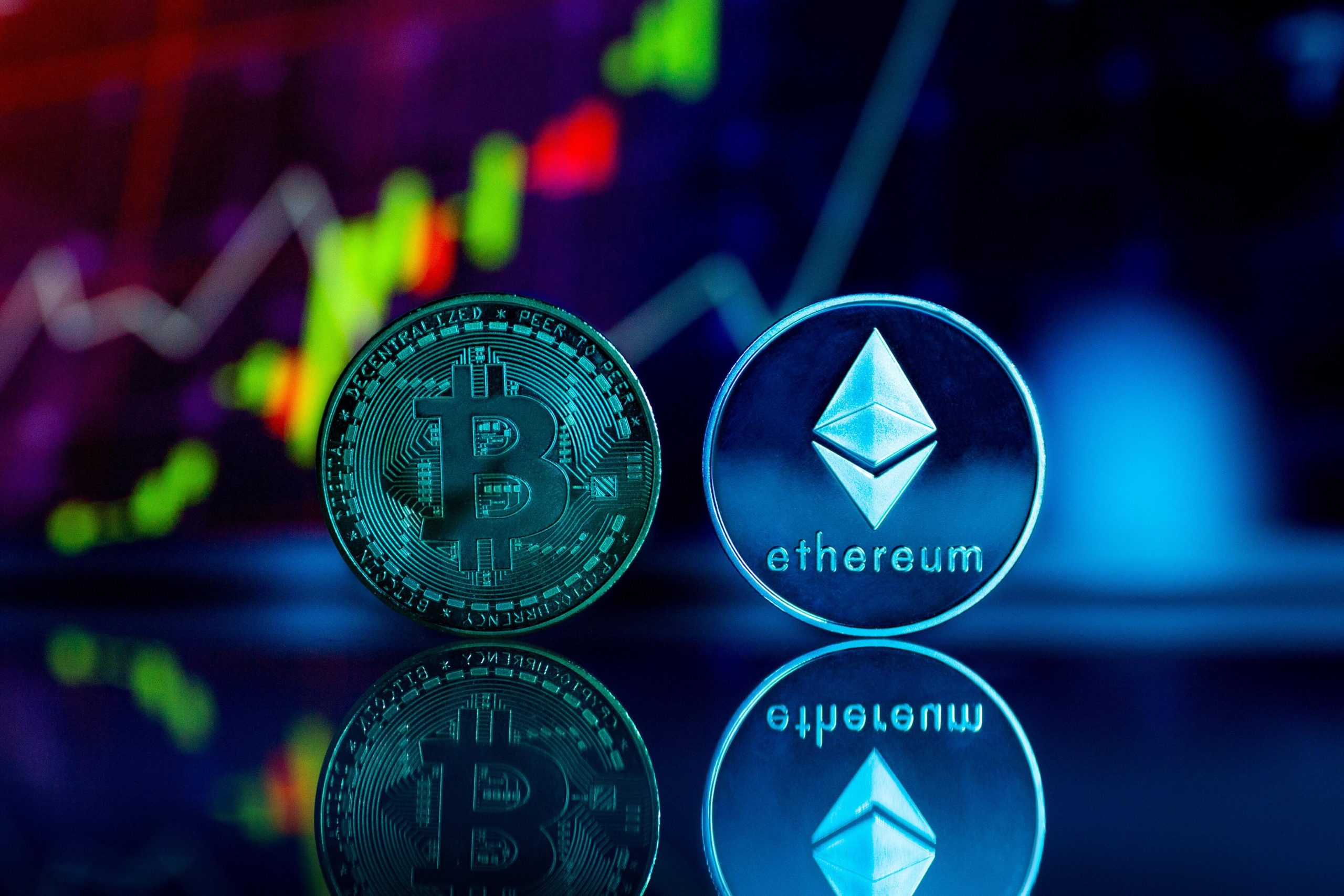Exploring Cross-Chain DeFi Solutions

- Understanding the concept of cross-chain DeFi
- Benefits of utilizing cross-chain solutions in DeFi
- Challenges faced by cross-chain DeFi projects
- Comparison of popular cross-chain DeFi platforms
- Future outlook for cross-chain DeFi ecosystem
- Key considerations when choosing a cross-chain DeFi solution
Understanding the concept of cross-chain DeFi
Cross-chain DeFi is a concept that allows different blockchain networks to communicate and interact with each other. This interoperability is crucial for the decentralized finance ecosystem to reach its full potential. By enabling assets to move seamlessly between blockchains, users can access a wider range of financial products and services.
Understanding how cross-chain DeFi works involves grasping the underlying technology that makes it possible. Through the use of bridges, smart contracts, and oracles, assets can be securely transferred between blockchains. This process ensures that transactions are executed smoothly and without the need for intermediaries.
One of the key benefits of cross-chain DeFi is the ability to access liquidity from multiple sources. This can help reduce slippage and improve overall trading efficiency. Additionally, by tapping into different blockchain networks, users can take advantage of unique opportunities and diversify their portfolios.
As the DeFi space continues to evolve, cross-chain solutions are becoming increasingly important. By breaking down barriers between blockchains, users can enjoy a more seamless and interconnected financial ecosystem. This innovation is paving the way for a more inclusive and efficient decentralized finance landscape.
Benefits of utilizing cross-chain solutions in DeFi
Utilizing cross-chain solutions in DeFi offers a multitude of benefits that can enhance the efficiency and effectiveness of decentralized finance platforms. By enabling interoperability between different blockchains, cross-chain solutions open up a world of possibilities for DeFi users and developers alike.
- Increased liquidity: Cross-chain solutions allow assets to move seamlessly between different blockchains, increasing liquidity and reducing the risk of price slippage.
- Diversification of assets: With cross-chain solutions, users can access a wider range of assets from different blockchains, allowing for greater diversification of their portfolios.
- Enhanced security: By spreading assets across multiple blockchains, users can reduce the risk of a single point of failure and enhance the security of their holdings.
- Improved scalability: Cross-chain solutions can help alleviate congestion on individual blockchains, improving scalability and transaction speeds for DeFi platforms.
- Expanded functionality: With cross-chain solutions, developers can create more complex and innovative DeFi applications that leverage the unique features of different blockchains.
Overall, the benefits of utilizing cross-chain solutions in DeFi are clear. They offer increased liquidity, diversification of assets, enhanced security, improved scalability, and expanded functionality. By embracing cross-chain solutions, the DeFi ecosystem can continue to grow and evolve, providing users with more opportunities and flexibility in their decentralized financial activities.
Challenges faced by cross-chain DeFi projects
One of the main challenges faced by cross-chain DeFi projects is the interoperability between different blockchains. Ensuring seamless communication and data transfer between disparate networks can be complex and require innovative solutions. Additionally, security concerns arise when assets are moved across chains, as vulnerabilities in one blockchain could potentially compromise the entire DeFi ecosystem.
Another obstacle is the lack of standardization in cross-chain protocols, leading to fragmentation and inefficiencies in the DeFi space. Without a unified framework for interoperability, projects may struggle to collaborate and share resources effectively. Moreover, regulatory compliance across multiple chains can be a daunting task, as each blockchain may have its own set of rules and requirements.
Scalability is also a significant issue for cross-chain DeFi projects, as the increased complexity of managing multiple chains can hinder transaction speeds and overall performance. Finding ways to optimize and streamline cross-chain transactions is crucial for the long-term success of decentralized finance.
Comparison of popular cross-chain DeFi platforms
When it comes to exploring cross-chain DeFi solutions, it is essential to compare popular platforms to determine which one best suits your needs. Below is a comparison of some of the most widely used cross-chain DeFi platforms:
| Platform | Key Features | Supported Blockchains | TVL (Total Value Locked) |
|---|---|---|---|
| 1inch | Aggregator, DEX | Ethereum, Binance Smart Chain, Polygon | $5 billion |
| Uniswap | Automated Market Maker (AMM) | Ethereum, Arbitrum, Optimism | $10 billion |
| PancakeSwap | AMM, Yield Farming | Binance Smart Chain | $3 billion |
Each of these platforms offers unique features and supports different blockchains, allowing users to access a wide range of DeFi services. By comparing the TVL of each platform, you can get an idea of the amount of assets locked in each ecosystem, which can be an indicator of its popularity and reliability.
It is important to consider factors such as user experience, security, fees, and community support when choosing a cross-chain DeFi platform. By conducting thorough research and comparing the available options, you can make an informed decision that aligns with your investment goals and risk tolerance.
Future outlook for cross-chain DeFi ecosystem
The future outlook for the cross-chain DeFi ecosystem looks promising as more projects are exploring innovative solutions to bridge different blockchains. This trend is expected to continue growing as the demand for interoperability between various blockchain networks increases.
One of the key advantages of cross-chain DeFi solutions is the ability to access a wider range of assets and liquidity pools. This opens up new opportunities for users to diversify their portfolios and maximize their returns. Additionally, cross-chain DeFi platforms can help reduce the risk of single-point failures and improve overall security by spreading assets across multiple chains.
As the technology behind cross-chain DeFi solutions continues to evolve, we can expect to see more efficient and seamless ways to transfer assets between different blockchains. This will not only enhance the user experience but also drive greater adoption of decentralized finance across the crypto ecosystem.
Overall, the future of cross-chain DeFi looks bright, with more projects pushing the boundaries of what is possible in terms of interoperability and scalability. By leveraging the strengths of multiple blockchains, we can create a more robust and interconnected financial system that benefits users and developers alike. Stay tuned for exciting developments in this space as the cross-chain DeFi ecosystem continues to expand and mature.
Key considerations when choosing a cross-chain DeFi solution
When considering a cross-chain DeFi solution, there are several key factors to keep in mind to ensure you make the best choice for your needs. One important consideration is the level of security offered by the solution. It is crucial to choose a platform that has a strong security protocol in place to protect your assets from potential threats.
Another important factor to consider is the level of decentralization of the cross-chain DeFi solution. Opt for a platform that offers a high degree of decentralization to ensure that your assets are not controlled by a single entity. This will help to reduce the risk of censorship and ensure that your assets remain secure and accessible at all times.
Additionally, it is essential to consider the scalability of the cross-chain DeFi solution. Look for a platform that can handle a high volume of transactions without experiencing delays or congestion. Scalability is crucial for ensuring that your transactions are processed quickly and efficiently, especially during times of high network activity.
Furthermore, consider the interoperability of the cross-chain DeFi solution. Choose a platform that allows for seamless communication and interaction between different blockchains. This will enable you to access a wider range of assets and liquidity pools, ultimately enhancing your overall DeFi experience.
Lastly, consider the user experience offered by the cross-chain DeFi solution. Opt for a platform that is user-friendly and intuitive, making it easy for you to navigate and utilize its features. A good user experience will help you make the most of the platform’s capabilities and ensure a smooth and efficient DeFi experience.




